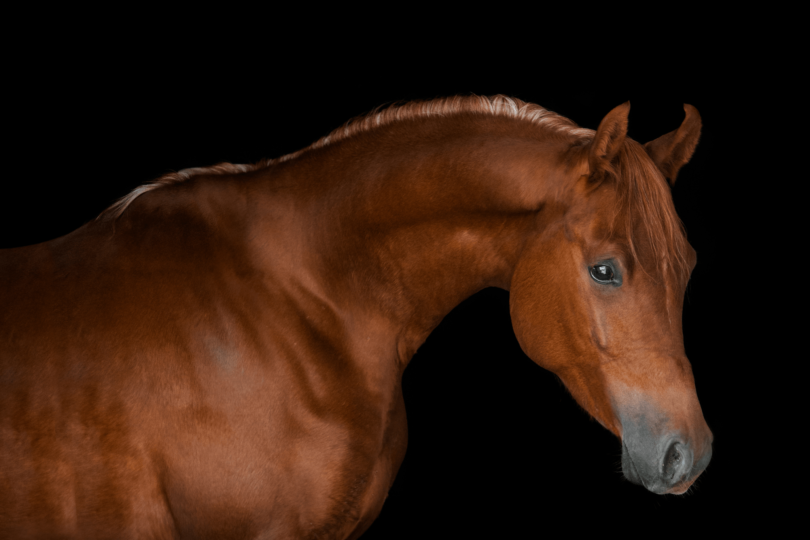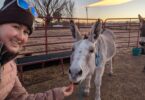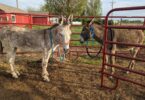Exploring a Legacy Breed
Arabian horses are one of the oldest breeds in the world, dating back 4,500 years. They have a distinct look and are one of the most easily recognizable breeds. The most notable physical characteristics are their dished faces, high-set tails, and “unparalleled beauty”—quite apparent in how the breed is depicted in art over the centuries.
Arabian horses typically live 25-30 years. While this is similar to the general horse population, there are documented instances of Arabian horses living well into their 40’s and the breed is known for longer lifespans than average.
While many factors impact a horse’s lifespan, the most notable include genetics, nutrition, exercise workload, and veterinary care. A little luck doesn’t hurt either!
Arabian Horse Characteristics
Arabian horses have a dished face, short back, and high-set tail. Despite being the original “hot-blooded” breed of horse, they tend to have a more willing temperament than other breeds that fall under this category. Arabians are known for their stamina, making them top competitors in endurance events. They also excel in versatility events.
While on the smaller side (14.1-15.1 hh), they are known to be sturdy (with good bone density) and strong for their size.
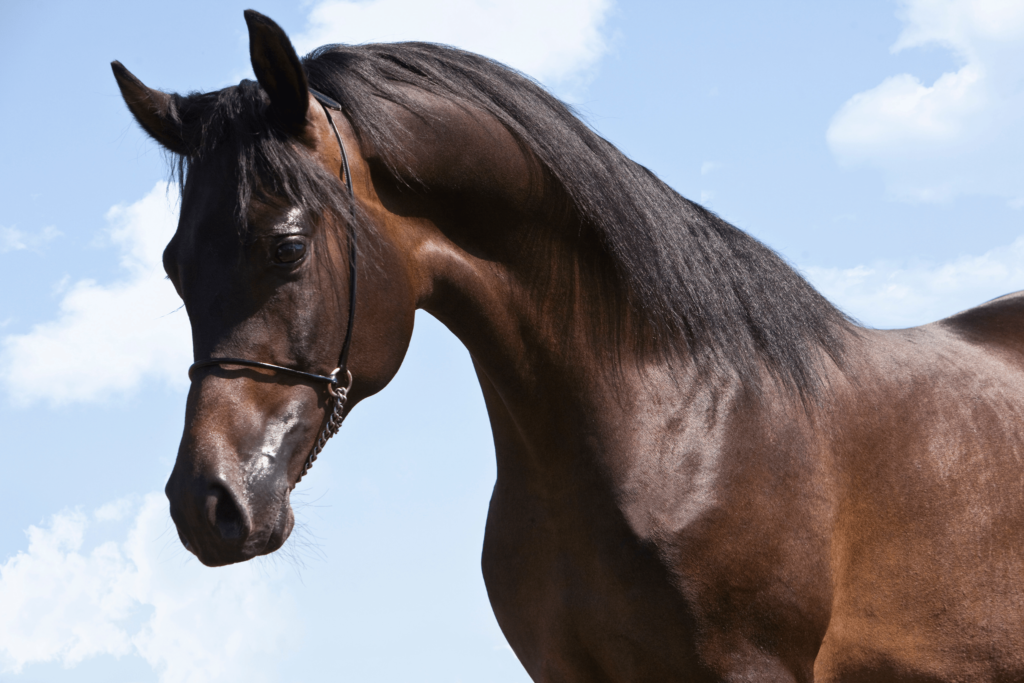
source: canva
Types of Arabian Horses
Egyptian
The Straight Egyptian Arabian is known for its purity of bloodlines—an unbroken line from today back to the Bedouin tribes from the deserts of Arabia.
Only horses with certifiable ancestry can be classified as Straight Egyptian.
Several governing bodies exist to manage this subset of the Arabian breed. The government of Egypt formed the Egyptian Agricultural Organization to ensure the preservation of the breed, believing it to be a national treasure. The Pyramid Society is another group founded to preserve, perpetuate, and promote the Egyptian Arabian and considers themselves to be “guardians of the breed.” Egyptian Arabians are meant to be beautiful and intelligent with great stamina.
Crabbet
Lady Anne Blunt, of England, became enamored with the Arabian horse. She and her husband, Wilfrid, imported the highest quality Egyptian Arabians to their farm in Crabbet Park. Lady Anne embraced the Bedouin obsession with perpetuating only the horses with the purest of pedigrees.
The Blunts started breeding Arabians in 1878, but separated in 1906. Wilfred moved his stud to Newbuildings, and Lady Anne remained at Crabbet Park, until she settled later in Egypt (where they had founded a stud at Sheykh Obeyd). Lady Anne died in 1917, resulting in a feud between Wilfred and his daughter, Lady Wentworth.
After court action, Lady Wentworth proceeded to produce her “super horses.”
Crabbet Arabians continued to be bred until 1971, when a highway was built through the property and the horses were sold. Crabbet Arabians are known for their sturdiness and sound conformation. They may not be the most attractive Arabians, but they are functional and have had a lasting impact on most modern breeding programs in the world.
Domestic
Arabian horses bred in the United States are referred to as “Domestic.” The first large importation of Arabian horses was in 1893 at the Chicago World’s Fair. The Turkish government brought in 45 horses which were auctioned in 1894.
At first, stud farms were located on the East Coast and in the Midwest, but eventually California became the “hub” for the domestic Arabian.
The Arabian Horse Registry of America was founded in 1908. American-bred Arabian horses are heavily influenced by Crabbet Arabians, with an influx of Polish and Egyptian Arabians in the 1960’s. Domestic Arabians are more than just pretty to look at—they are functional and often trained in a variety of events, such as endurance, jumping, and polo.
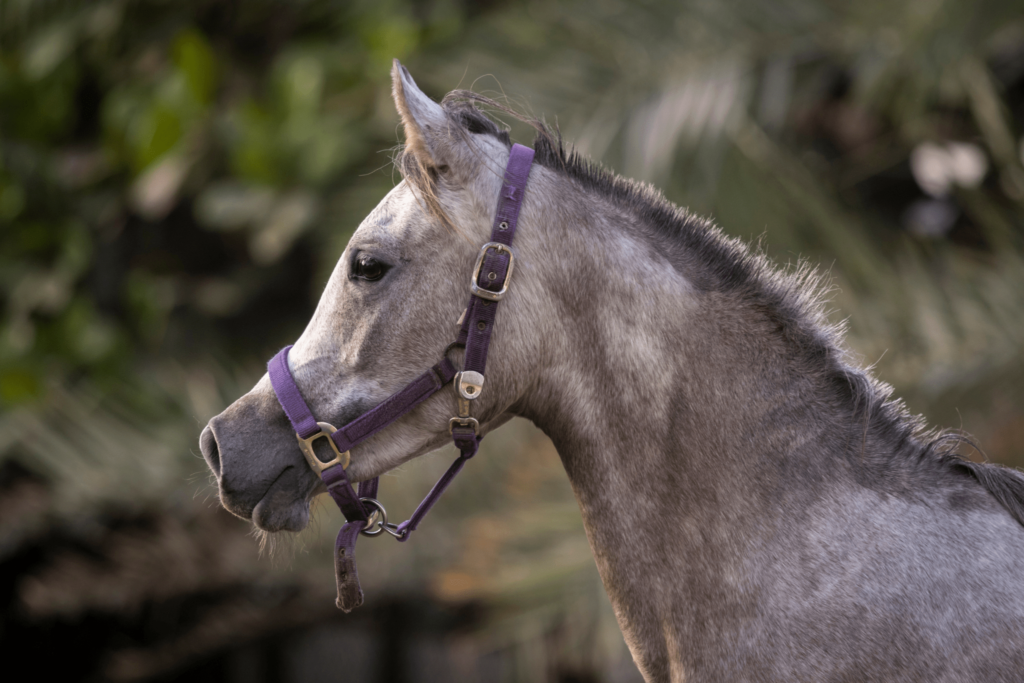
source: canva
Russian
Wealthy Russian nobles coveted the purebred Arabian—they acquired them through financial and political means, as well as war. While the breed was documented in Russia during the 17th century, organized purebred breeding didn’t begin until late in the 19th century.
Unfortunately, the Russian Revolution resulted in most purebred Arabians being killed and records destroyed.
A state-controlled breeding farm, Tersk, was established in 1921. In 1930, the farm shifted to focus on Arabians. Athletic ability was the highest priority for Russian Arabians, as racing was a favorite pastime. Later, Crabbet Arabians were imported to add a touch of beauty to the athletic nature of the existing horses. WWII resulted in many Polish Arabians being “rescued” (also referred to as “taken”) and brought to the Russian farm, Tersk.
Polish
The development of the Polish Arabian is closely linked to war. The most desirable war prize was the Middle Eastern and Asian rival’s horses—the Arabian. Purebred Arabians in Poland date back to the sixteenth century. However, WWI almost destroyed breeding, leaving only 27 mares and seven fillies. The Poles formed the Arabian Horse Breeding Society in 1926, publishing the first stud book in 1932.
WWII was even more devastating, scattering Polish Arabians across the globe.
Polish Arabians are oversimplified into two sub-sects—the “Seglawi,” known for their beauty, and the “Kuhailan,” known for their athleticism. Seglawi are frequently gray, while Kuhailans are often bay. Polish Arabians are evaluated on the track; horses that perform well pass and are approved for breeding, while those less successful are sold. Polish Arabians are only sold for export once a year at an annual auction.
Spanish
Horses have been an integral part of the Iberian Peninsula for almost six thousand years. Muslims invaded in 711 AD, bringing an Arabian influence to the existing stock. Later, the “State” took over equine breeding. Horses were considered tools of war, so breeding fell under the Department of Defense.
The First Spanish Registry and Stud-Book was established in 1847 by Queen Isabel II. It is the oldest established register of Arabians.
Early imports were used to improve the Iberian Warhorse and upgrade the general horse stock. Breeding of purebred Arabians became more of a focus in the 1900’s. In 2006, there were nearly 13,000 registered Arabians in Spain.
How Arabians Became Easy Keepers
Arabian horses evolved in harsh desert climates where only the strongest survived. Speed, endurance, agility, and loyalty were prized among the Bedouin people—only the best horses were kept. Food was scarce and a “hard keeper” would not have survived in these conditions.
Therefore, today, Arabians are generally known to be easy keepers.
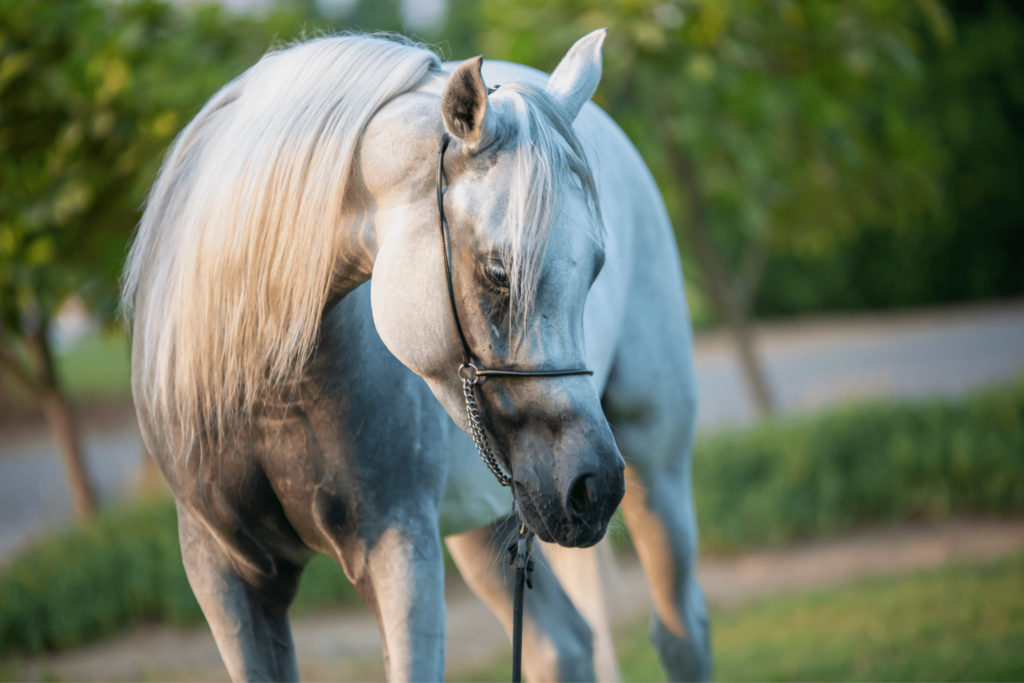
source: canva
How to Care for an Arabian Horse
Arabian horses require the same standards of care as any other horse—access to shelter, clean water, hay, and grain as appropriate for body weight, adequate exercise, and regular veterinary care.
Where should Arabian horses live?
While Arabian horses originated in a desert climate, they are now located all over the world and can do well in any climate. Some horses may need to be blanketed in colder winter climates, especially if they have not had time to acclimate and grow an appropriate winter coat.
What Should Arabian Horses Eat?
Arabian horses thrive on good quality hay—they may only need minimal grain to supplement high-quality hay, depending on their exercise load. Balance their diet to match their exercise requirements and maintain a healthy body weight.
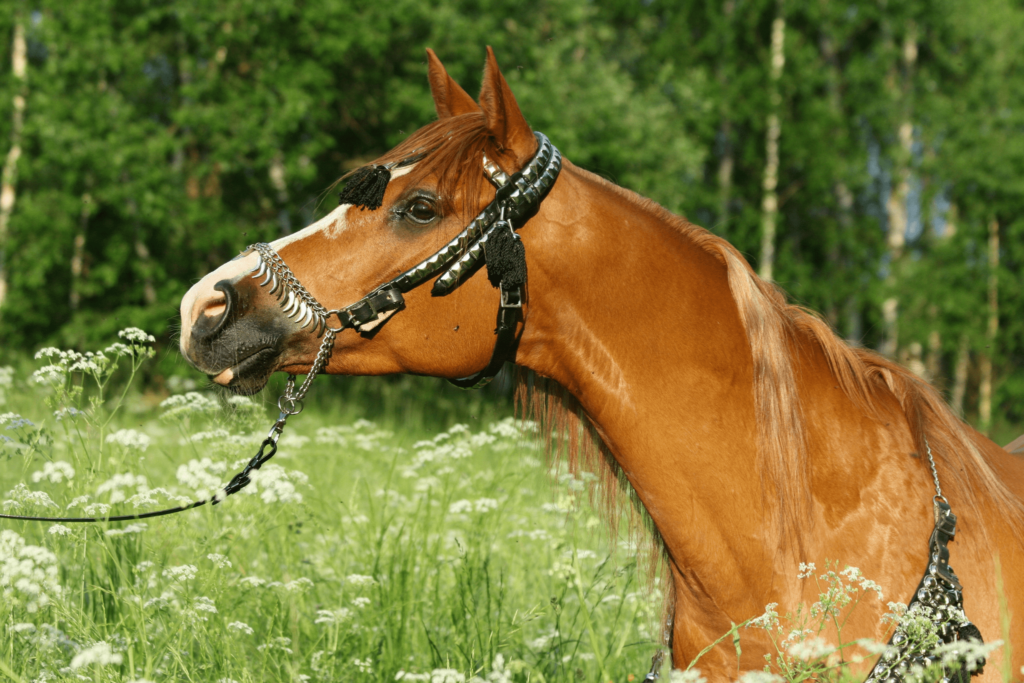
source: canva
Do Arabian horses need shoes?
Not all horses need shoes—your farrier can help determine if shoes are necessary. Horses in heavy work or those with hoof issues that can be corrected with shoeing, are good candidates for shoes. Many horses will do just fine barefoot.
Arabian Horse Stages of Life
The Arabian horse has an 11 month gestation period, the same as other breeds of equines. Newborn horses are called foals up to one year old.
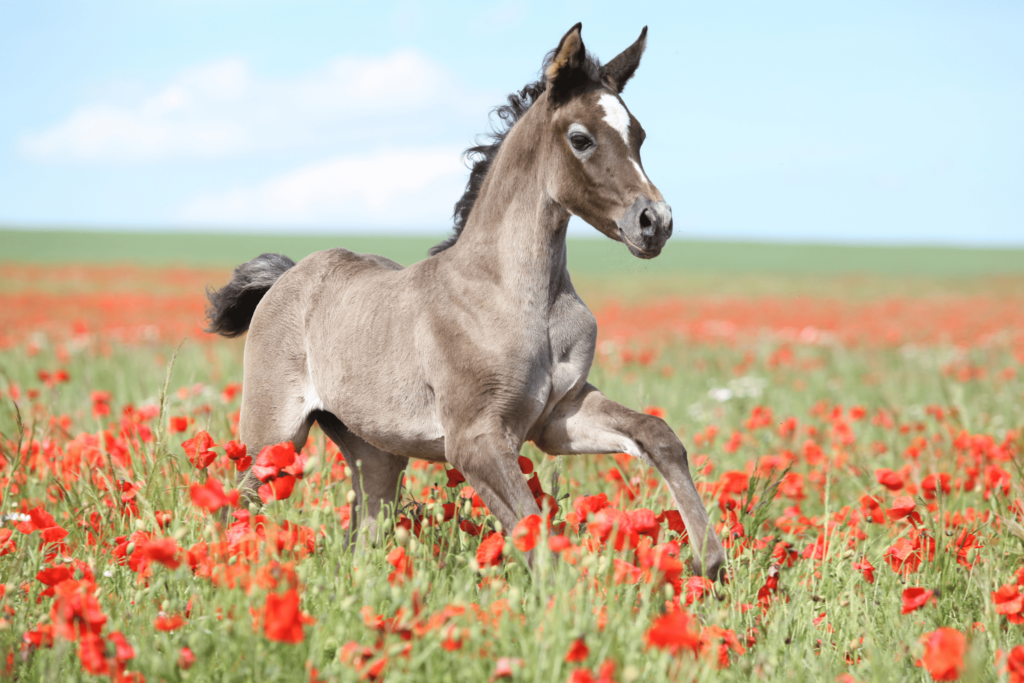
source: canva
After a year, the males are called colts and the females fillies. At four, fillies become mares and colts become either geldings (unable to reproduce) or stallions (still have reproductive organs).
Arabian horses are fully grown by six years old.
Depending on the line, they may take slightly longer than other breeds of horses to reach their full development.
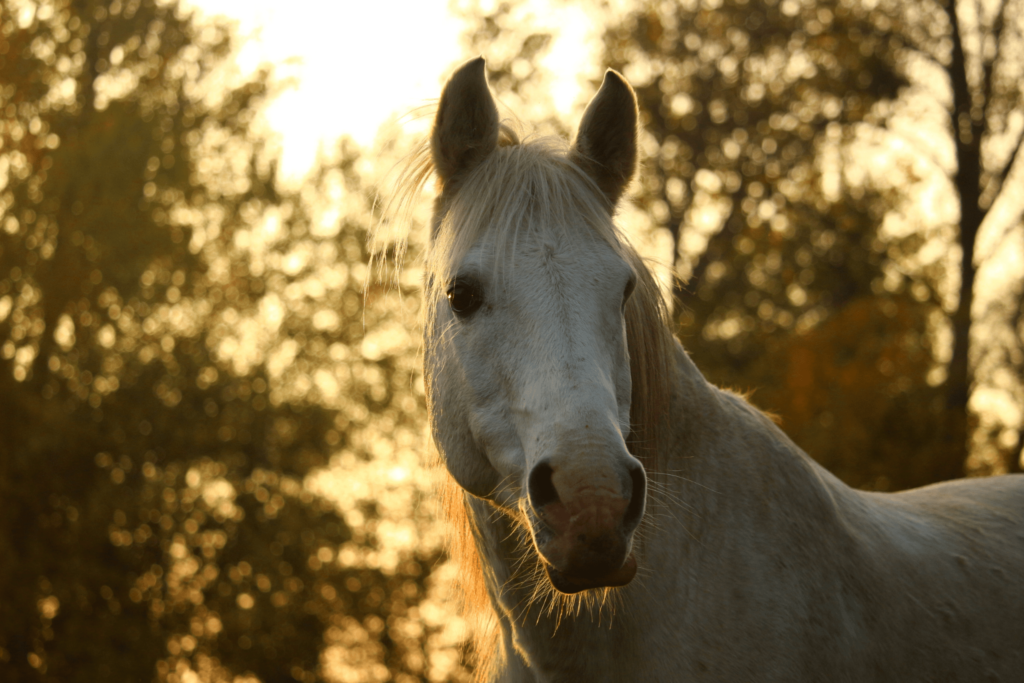
source: canva
Horses are considered in the “adult” stage from four to 15-20 (it’s debatable), when they enter the “senior” stage of life. Signs of ageing include graying hairs around the muzzle or eyes, a swayback appearance, stiffness caused by arthritis, a drooping lower lip, and increased risk for disease such as colic, blindness, and lameness.
Frequently Asked Questions
What is the oldest Arabian horse?
The oldest living Arabian is a 46-year-old Polish Arabian mare named Magic.
What is the average Arabian horse height?
Arabians range from 14.1-15.1 hands high (hh).
Are there any interesting facts about Arabians?
Did you know some Arabian horses have a different skeletal structure than the average horse? Not all, but some Arabians have five lumbar vertebrae instead of the typical six, and/or 17 sets of ribs instead of 18.
P.S. Enjoy this article? Trot on over to:
- Horse Lifespan 101 (Life Stages, Teeth, Senior Horse Care)
- Pony Lifespan 101 (Life Stages, Teeth, Senior Pony Care)
- 5 Hardy Horse Breeds with the Longest Lifespans
- 60 Questions to Ask When Buying the Horse of Your Dreams
- Parts of the Horse Quiz: Can You Name Them All?
- Horse Hay FAQs (List of Types of Hay, The Best Hay for Horses, etc.
Sources:
- https://www.arabianhorses.org/discover/arabian-horses/
- https://www.arabianhorses.org/export/content.export/aha-docs/Bloodline_Arabian_Spanish.pdf
- https://www.arabianhorses.org/export/content.export/aha-docs/Bloodline_Arabian_Polish.pdf
- https://www.arabianhorses.org/export/content.export/aha-docs/Bloodline_Arabian_Egyptian.pdf
- https://www.arabianhorses.org/export/content.export/aha-docs/Bloodline_Arabian_Russian.pdf
- https://www.arabianhorses.org/export/content.export/aha-docs/Bloodline_Arabian_Crabbet.pdf
- https://www.arabianhorses.org/export/content.export/aha-docs/Bloodline_Arabian_Domestic.pdf
- https://www.pyramidsociety.org/society/history-impact

